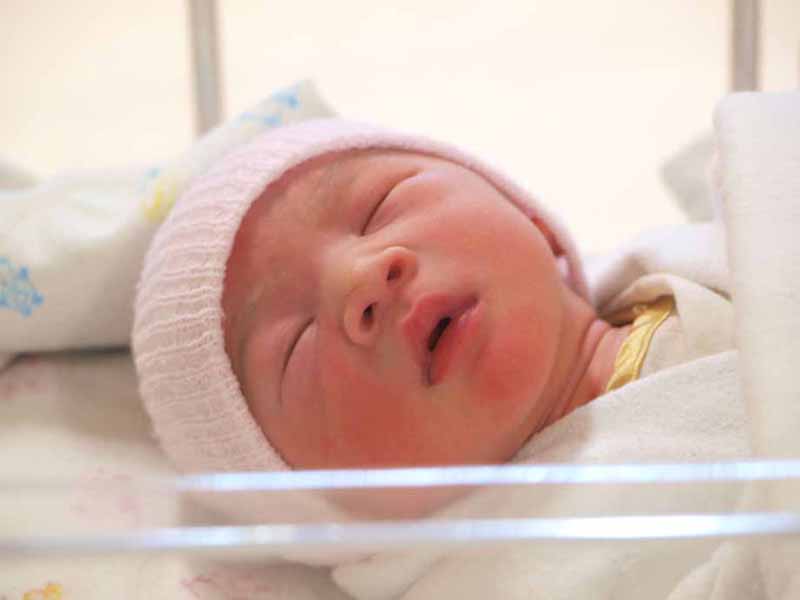USPSTF Draft Recommendation
Give Newborns Antibiotic Ointment to Prevent Eye Infection
September 19, 2018, 12:59 pm Chris Crawford – Gonorrhea continues to be a growing public health concern, with diagnoses increasing by 67 percent from 2013 to 2017, according to recent CDC data.
Gonococcal ophthalmia neonatorum (GON) is a severe infection of the eye that can occur in babies born to women with gonorrhea. If left untreated, the condition can cause serious eye problems, including corneal scarring, ocular perforation and blindness, as early as 24 hours after birth.
And without ocular prophylaxis, it's estimated that up to half of babies born to mothers with gonorrhea could develop GON. The only FDA-approved medication for this is erythromycin.
On Sept. 11, the U.S. Preventive Services Task Force (USPSTF) posted a draft recommendation statement and draft evidence review that examined how well ocular prophylaxis protected against GON.

What the USPSTF found was convincing evidence that applying prophylactic ocular topical medication for all newborns is safe and effective at preventing GON – an "A" recommendation.
Ocular prophylaxis of newborns with 0.5 percent erythromycin ophthalmic ointment can prevent GON; because ocular prophylaxis is the standard of care for all newborns in the United States, GON is extremely rare (0.2 to 1.6 cases per 100,000 live births per year).
"It is imperative that all newborns get antibiotic ointment to prevent GON, especially with the recent rise in gonorrhea rates," said USPSTF member Alex Kemper, M.D., M.P.H., M.S., in a news release. "This medication is safe for babies and treatment can prevent blindness."
Story Highlights
This draft recommendation is consistent with the USPSTF's 2011 recommendation, which the AAFP supported at the time.
For the current draft recommendation, the task force commissioned a review to look for substantial new evidence on the benefits and harms of ocular prophylaxis and determined that the net benefit of ocular prophylaxis continues to be well established.
The USPSTF didn't find new substantial evidence to change its recommendation, and thus reaffirmed its 2011 recommendation.
Screening for and treatment of gonorrhea in pregnant women also is an important strategy for preventing GON.
In a separate recommendation, the task force recommended that all pregnant women at risk for gonorrhea be screened and treated for the infection as part of routine prenatal care.
"However, given that not all women get prenatal care and that GON has devastating consequences, the task force reaffirms that all newborns should continue to receive this important preventive medication," the USPSTF said in the news release.
Family Physician Expert's Perspective
AAFP Commission on Health of the Public and Science member Lynn Fisher, M.D., of Plainville, Kan., told AAFP News that the USPSTF's new draft recommendation doesn't change how family physicians treat newborns, as the standard of care already calls for use of erythromycin ointment on their eyes.
"Honestly, this isn't a controversial issue in my practice the way that the vitamin K shot or the hepatitis B vaccine can be," he said. "I don't know if it's that parents feel more comfortable with something that is applied topically instead of an injection, in which they fear that something unsafe may be given to their newborn child."
Fisher also restated the importance of this draft recommendation given the troubling increase of gonorrhea in the country.
"The (erythromycin ophthalmic ointment) treatment is cheap, universally available and doesn't cause any adverse effects," he said. "Since women may be asymptomatic with a gonorrhea infection and some women may have poor prenatal care, for me, newborn treatment is just an easy way to ensure that I hopefully never see a case of gonococcal ophthalmia neonatorum during my career."
Up Next
The USPSTF is inviting comments on its draft recommendation statement and draft evidence review on ocular prophylaxis for GON.
The public comment window for the draft recommendation is open until 8 p.m. EDT on Oct. 9. All comments received will be considered as the task force prepares its final recommendation.
The AAFP will review the USPSTF's draft recommendation statement and supporting evidence and provide comments to the task force. The Academy will release its own recommendation on the topic after the task force finalizes its guidance.